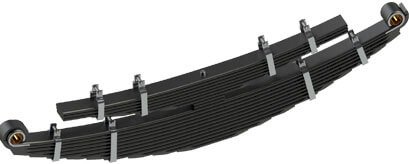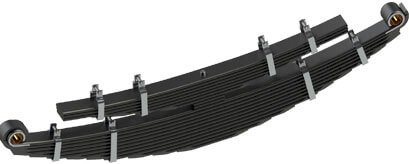Distinct features of the conventional leaf springs
The conventional leaf spring have a design created from the spring leaves with constant cross sections.

The leaf springs are considered an essential part of any vehicle’s suspension system and they help to hold the weight of the vehicle together so that it can move smoothly on the road. Over the years, a wide range of leaf springs has been introduced into practical use that helps vehicles to deliver reliable performance while moving on the road. One of the types of leaf springs that are used extensively all across India is the conventional leaf spring or the multi-leaf spring. While these leaf springs have been in use for a long time, they are still preferred for their simple yet powerful performance.
 The conventional leaf spring have a design created from the spring leaves with constant cross sections. Such an intrinsic design makes them suitable for being used in construction vehicles and agricultural vehicles. Even when the leaf springs have undergone some damage, users can have them repaired and restored very quickly. The conventional leaf springs are created by bringing together multiple flat plates that stand out for their semi-elliptical shapes. A good thing about the multi-leaf springs is that users do not have to install additional stabilizers for their vehicles when they have these leaf springs. This is why they are extensively used in large trucks and railway wagons.
The conventional leaf spring have a design created from the spring leaves with constant cross sections. Such an intrinsic design makes them suitable for being used in construction vehicles and agricultural vehicles. Even when the leaf springs have undergone some damage, users can have them repaired and restored very quickly. The conventional leaf springs are created by bringing together multiple flat plates that stand out for their semi-elliptical shapes. A good thing about the multi-leaf springs is that users do not have to install additional stabilizers for their vehicles when they have these leaf springs. This is why they are extensively used in large trucks and railway wagons.
The conventional leaf springs have a leaf at the top with the maximum length. And, it is known as the master leaf. The leaves gradually taper down in their length, as they move toward the bottom. They are capable of holding substantial amounts of load and stress for a long time. Known for their robustness and elasticity, they can stay intact easily without undergoing much damage; a reason for which they are often preferred over other types of leaf springs.





































